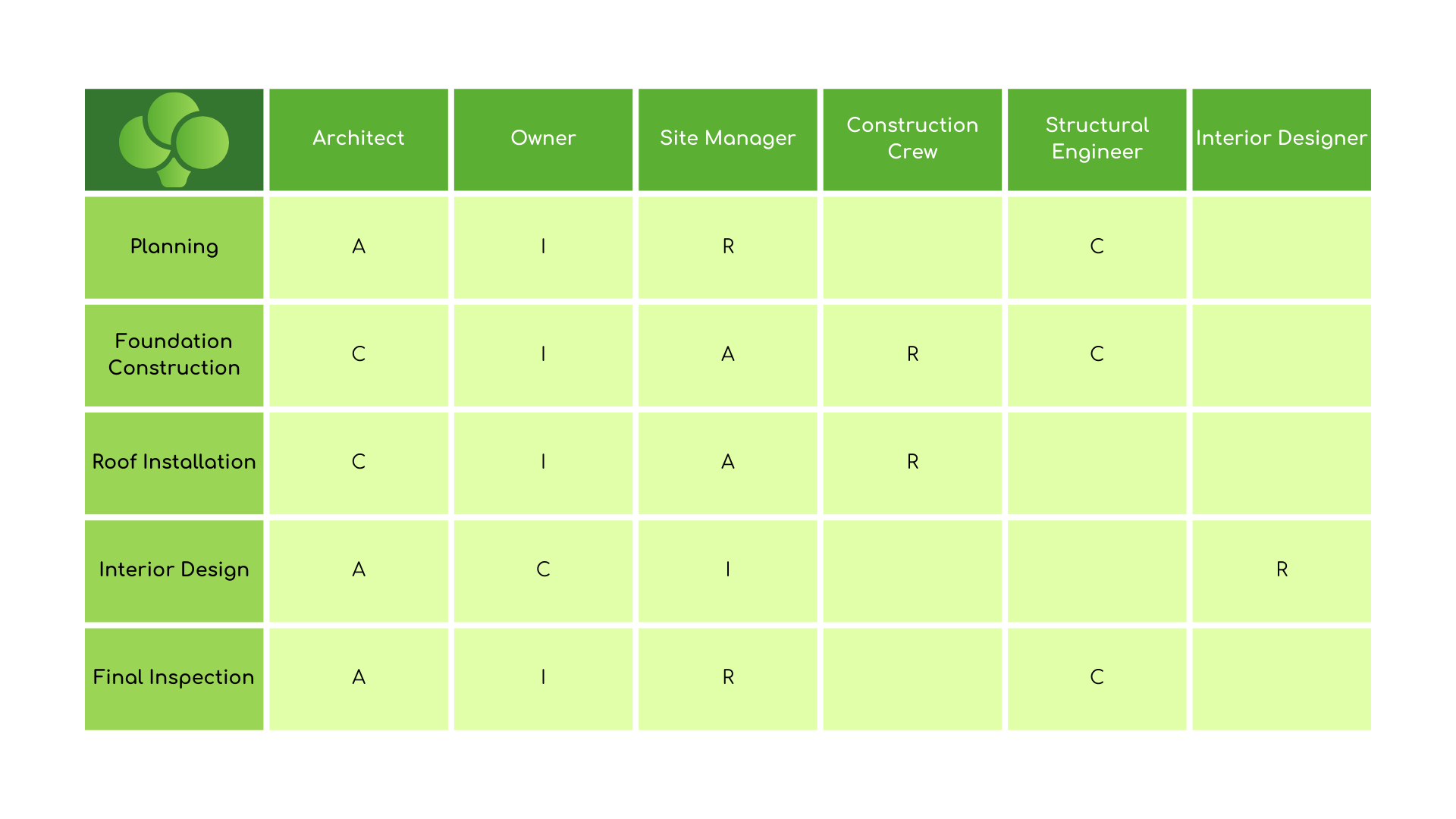RACI Model: Responsibility Assignment & Accountability Solutions Made Easy
The RACI model is an indispensable tool in project management that helps you clearly define responsibilities and increase the efficiency of your projects. In this guide, you'll learn how the RACI matrix works, why it's so useful, and how you can use it effectively in your team to make projects run smoothly. Read on to understand how you can maximize your team's performance through clear accountability solutions and responsibility assignment.
What is a RACI Model?
The RACI model is at the heart of effective project management. It is an acronym that stands for Responsible, Accountable, Consulted, and Informed. This matrix helps to clearly define roles and responsibilities within a project and ensures that all participants understand their tasks and know who is in charge of execution.

How Does the RACI Model Work?
Definition and Application in Projects
A RACI matrix is a technique for illustrating responsibility assignment within a project. The RACI grid consists of a table listing project tasks on the Y-axis and team members or roles on the X-axis. Each task is assigned at least one Responsible person who is in charge of carrying out the task.
Creating a RACI Matrix: The Step-by-Step Process
Identify Tasks and Roles:
Start by creating a list of all tasks within the project. Then, identify the roles or team members involved in these tasks.
Responsible:
Assign a person to each task to carry it out. This person gets the work done.
Example House Construction: When building a house, the site manager carries out the daily work. They coordinate the craftsmen and ensure that everything proceeds according to plan.
Accountable:
Determine who is accountable for the result. This person is ultimately answerable for the success.
Example House Construction: The architect is accountable for the overall project. They ensure that the house complies with building regulations and that the final result meets the client's expectations.
Consulted:
Find out who should be consulted. These individuals provide valuable tips and feedback.
Example House Construction: The structural engineer is consulted to ensure the construction is stable. They provide advice on the load-bearing capacity of the walls and foundations.
Informed:
Keep everyone who needs to know in the loop. These people are kept up-to-date on progress.
Example House Construction: The homeowner is regularly informed about the progress. They know when important milestones are reached and can plan accordingly.
Create and Review the Matrix:
Create a table with the tasks and roles, enter the corresponding letters R, A, C, or I, and review the RACI grid regularly to ensure it remains current.

Advantages and Disadvantages of the RACI Model
Advantages
- Clarity and Transparency: The RACI matrix provides a clear overview of responsibility assignment, which improves communication and understanding within the team.
- Efficiency and Accountability: Clear accountability solutions increase project efficiency and ensure responsibility for task completion.
Disadvantages
- Complexity in Large Projects: In complex projects with many stakeholders, the RACI grid can quickly become confusing.
- Ambiguity with Multiple Assignments: If there is more than one responsible person per task, this can lead to a lack of clarity.
Tips
Avoid ambiguity by indicating a hierarchy with numbers when there are multiple responsible individuals. This clarifies who holds the main responsibility.
Variants of the RACI Model and Their Use
Comparison to RACI: Extended Models
Besides the classic RACI model, there are extended variants such as RASCI (with Support) or RACIQ (with Quality Assurance). These models offer additional roles to cover other aspects of project stakeholders and to plan project execution in even greater detail.
Tips for Creating and Using the RACI Matrix
- Create Clarity: Ensure that each task is assigned to only one accountable person.
- Regular Updates: Review the matrix regularly to ensure it meets current project requirements.
- Involve Team Members: Include all relevant stakeholders to get their input on the responsibility assignments.
The Role of the RACI Model in Agile Project Management
The RACI model can also be useful in agile projects. It helps to clearly define responsibilities within self-organized teams and to facilitate communication. By using the RACI matrix, agile teams can ensure that important information flows and that all participants are clear about their roles and responsibilities.
A notable advantage of the RACI model, as described in the Forbes article, is its ability to create clear lines of communication and ensure smooth workflows within a team. The RACI matrix prevents the common problem of key decision-makers being involved late in the project and making unexpected changes because they were not consulted. By clearly defining all stakeholders and their roles from the outset, the RACI model ensures that all relevant information flows in a timely manner and that decisions can be made on a well-informed basis. This minimizes the risk of misunderstandings and improves the efficiency of the entire project team.
Optimizing Your RACI Matrix with procoli
The procoli software offers a user-friendly solution to support the RACI model. With procoli, you can seamlessly assign tasks via email without external partners needing to register. Automated notifications and an interactive web view facilitate collaboration and information exchange. These features make procoli a valuable tool for optimizing your project management processes.
Summary: The Key Points
- RACI Model: An effective tool for displaying responsibility assignment in project management.
- Responsibilities: Clear definitions promote efficiency and transparency.
- procoli: Supports the use of the RACI model and efficient collaboration through seamless integration and role-based task distribution.
- Regular Review: Ensure that the RACI matrix remains up-to-date and meets project requirements.
The RACI model offers a structured method for managing projects and promoting collaboration. Use it to create clarity and increase efficiency in your team.